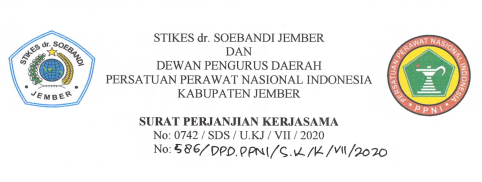DIFFERENCES OF EFFECTIVENESS OF GIVING WARM COMPRESSES AND RED ONCE COMPRESSES TO THE DECREASE OF TEMPERATURE OF CHILDREN BODY AGES 0-1 YEARS WHO HAVE FEEDED A POST IMMUNIZATION FALL IN SEMBORO VILLAGE
Keywords:
Cold, Warm CompressAbstract
Fever is a condition when body temperature rises above normal temperature (≥37,5ºC). Handling of fever can be done by pharmacological and non-pharmacological measures. Non-pharmacological actions to reduce body temperature provide warm compresses and onion compresses. Warm compresses are easy to do, do not require large costs, and allow patients or families to not be overly dependent on antipyretic drugs. Shallot compresses are easily accessible to the public, both in price and availability. The purpose of this study is to prove the difference in the effectiveness of a child's body temperature between warm compresses and shallot compresses. This study uses a Quasi Experimental research design with Two groups pretest posttest using a Cross-Sectional approach. The study sample consisted of 14 children who had a fever in Semboro village. The sampling technique uses mercury thermometer with quota sampling. The t test results showed that in the warm compress group the difference between body temperature decreased by 3ºC and p-value 0,000 (<0.05) while in the compressed onion group the mean difference in body temperature decreased by 4.57ºC and p-value 0,000 (< 0.05). The results of the independent t-test showed a p-value of 0.232 (> 0.05). The conclusion in this study is that there is no significant difference between warm compresses and shallot compresses on the decrease in body temperature of children who have a fever, but the administration of shallot compresses to reach normal body temperatures faster than the administration of warm compresses.





